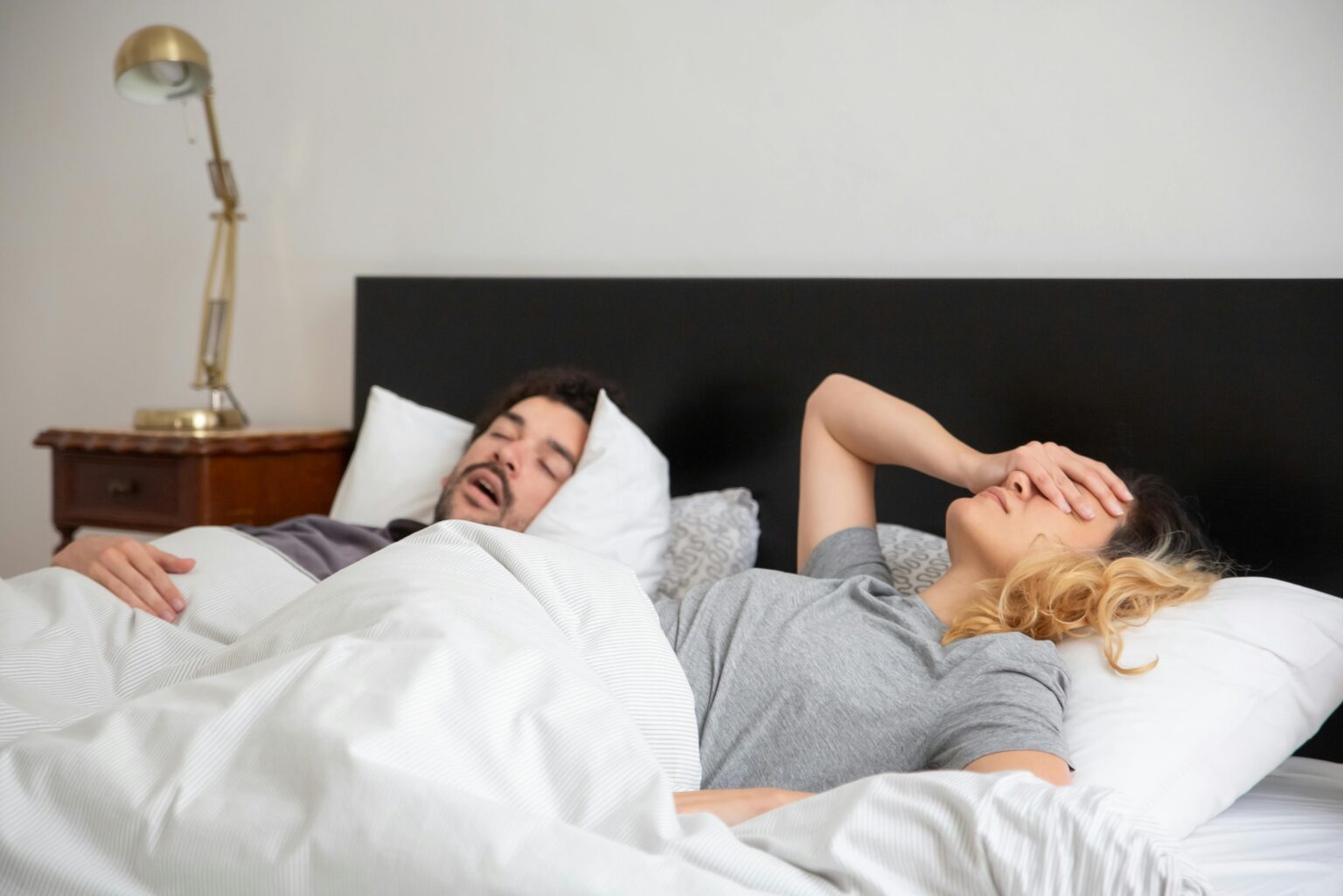If you’re one of the millions of people who experience sleep apnea—a condition in which your breathing stops and restarts frequently while sleeping—you know firsthand how this condition can affect the quality of your sleep, and how hard it is to mitigate. One thing you can do to improve your sleep is consider your sleep position. You want the position of your body to allow airflow to move freely throughout the night.

Sleeping on Your Side
Experts agree that side sleeping is the best position for reducing sleep apnea. On your side, the tongue and soft tissues in your mouth and throat are less likely to block your airways, reducing your chances of your breathing becoming obstructed and reducing snoring. You can make this even more effective by tucking a pillow between your knees and behind your back, keeping your body aligned. Additionally, straighten your body out instead of curling up to maximize lung capacity.
Left or Right Side?
You may be wondering if it matters which side of your body you sleep on. It can make a difference, but both sides will still help keep your airways unblocked.
Since the heart is located on the left side of your body, sleeping on your right side can help improve blood flow to and from the heart, allowing oxygen to circulate more efficiently. On the other hand, if you have acid reflux, sleeping on your left side may alleviate its symptoms (and their subsequent effects on your airways) because the stomach is J-shaped and faces downward when you’re on your left side, similar to a water pitcher.
Sleeping on Your Stomach
Research on stomach sleeping and its effects on sleep apnea is limited, and the few available studies have mixed results. Some studies suggest that sleeping on your stomach can prevent the airway from being blocked and reduce pauses in breathing; however, many people with sleep apnea complain that sleeping in this position causes some strain in the neck and an arch in the lower back, which can affect airways differently.
If sleeping on your stomach is comfortable for you, it’s worth experimenting with this position to see how it affects your sleep apnea. If it’s uncomfortable (stomach sleeping is the least popular sleeping position among adults), then you don’t need to worry about it.
Sleeping on Your Back
Sleeping on your back is generally the worst sleeping position for those with sleep apnea. It increases the likelihood of the tissues in your mouth falling backward at the opening of the throat and obstructing your airways. Back sleeping may also exacerbate snoring, which is often a symptom of sleep apnea.
Head Position
In any sleeping position—but especially when side sleeping or sleeping on your back—it’s beneficial to elevate your head during sleep. In any sleep position, your head should be positioned in line with your neck and spine.
CPAP Machine
If you’re using a continuous positive airway pressure (CPAP) machine, side sleeping is the recommended route—sleeping on your stomach is incredibly uncomfortable with a CPAP, and sleeping on your back will continue to worsen the condition. There are CPAP pillows and other accessories available that will keep your head elevated and comfortable while wearing your CPAP machine.
When to Seek Medical Help
If your sleep apnea is causing you to sleep poorly, no matter what sleeping position you use, it’s a good idea to speak to an ENT specialist. We can discuss CPAP machines or other oral appliances that can alleviate the effects of sleep apnea, getting you the sleep you deserve. Call Palmetto ENT & Allergy today to find out more or to make an appointment.
